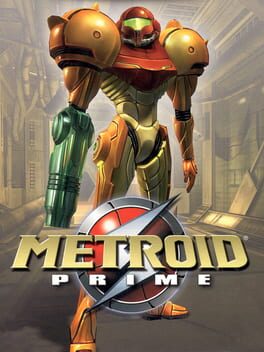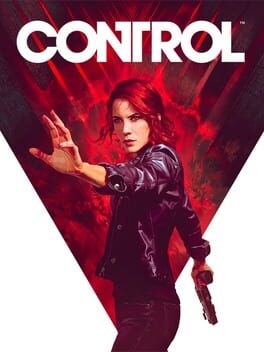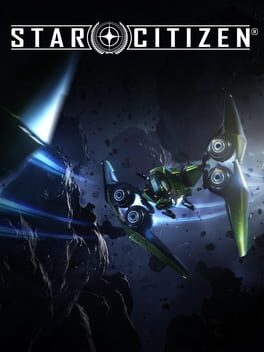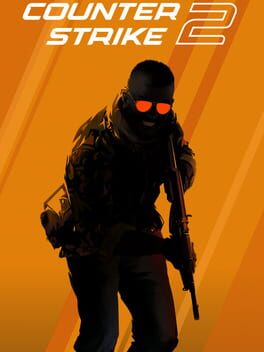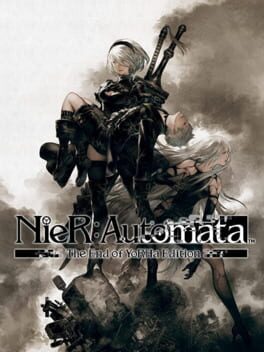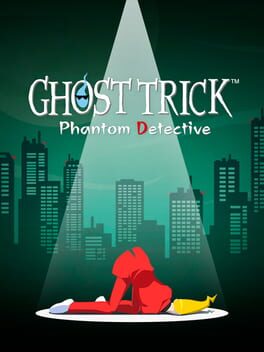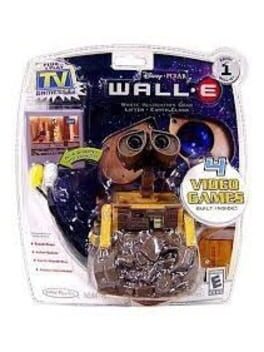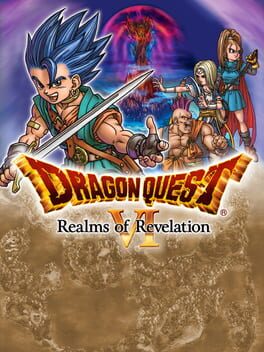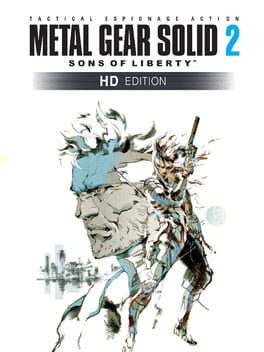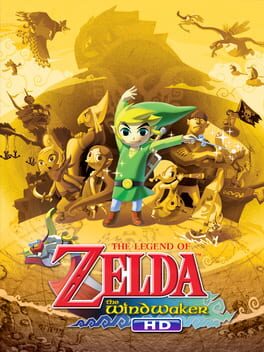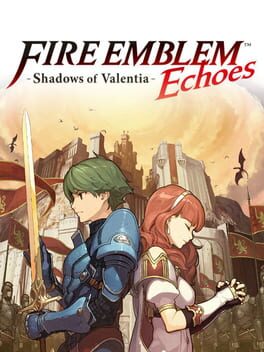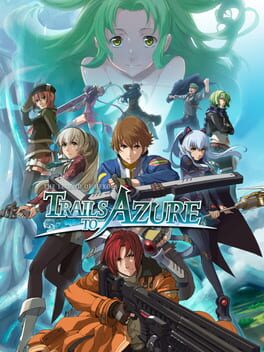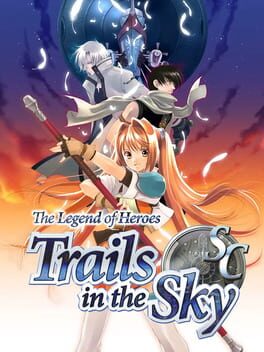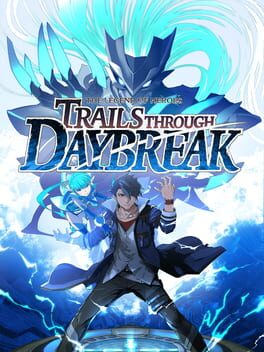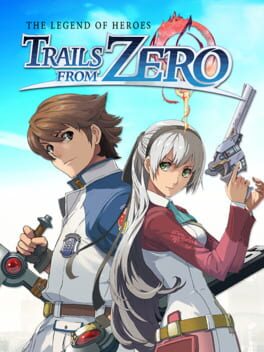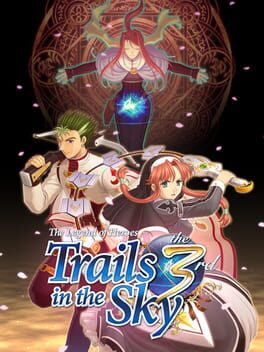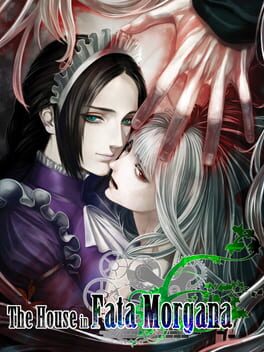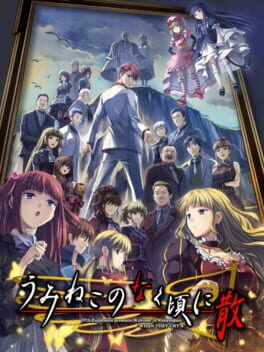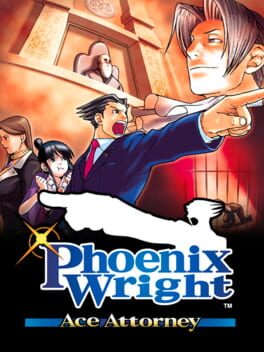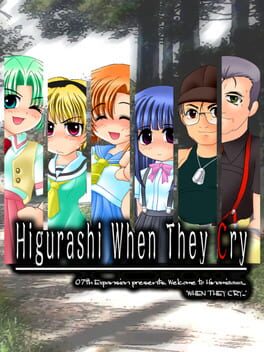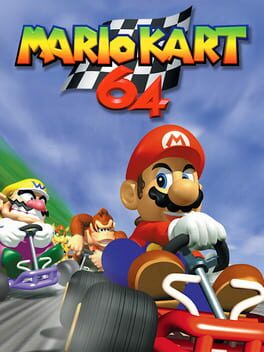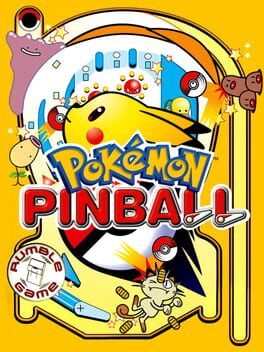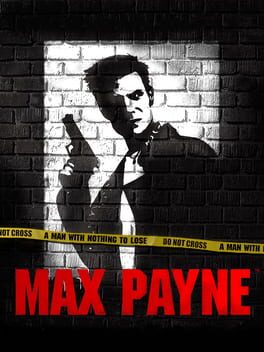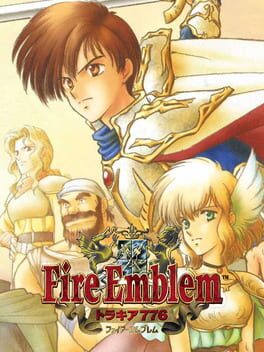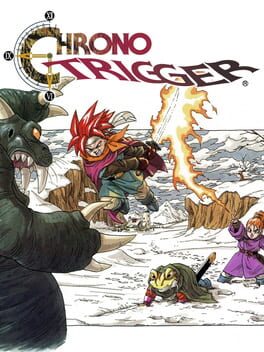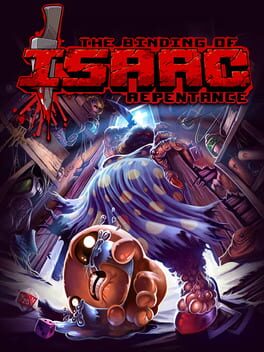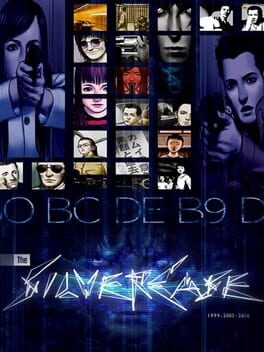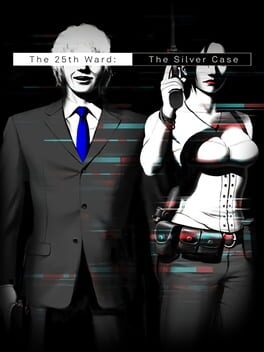101 reviews liked by guah
Metroid Prime
2002
This review contains spoilers
Spoiler level: High. Expect specific mechanical and story spoilers.
I played version 1.0 of the GameCube version of Metroid Prime, on a Wii, with a widescreen mod. Although I do own the game, I used Nintendont, which may have improved the game’s performance. I achieved 74% completion with most objects scanned and all but one E-tank, judging by the HUD.
The controls are passable. Tank controls may feel like an odd choice, but they are probably the best scheme that the controller could accommodate; dual-stick aiming would have heavily compromised the button mapping, and the controller’s trigger buttons would have worsened the feel of the weapons, as most sport a one-press, one-shot scheme, which keeps combat frantic and direct. The existing controls are also poorly tuned. Cycling between enemies with the lock-on is finicky at best, as is target acquisition. Weapon switch speed, while fine for combat, bogs down traversal, as all doors require the correct beam to open, even after being unlocked once. Samus also turns too slowly, feeling more like Jill Valentine than a bounty hunter.
Metroid Prime’s true zenith lies within its masterful progression and atmosphere. Samus herself demonstrates the widest gulf, granting a taste of power during the prologue before her upgrades are stripped away, then slowly expanding her capabilities until she can dispatch any enemy with ease. The world similarly shifts; initially, Samus encounters only naturalistic enemies and ancient structures, with adventurous music befitting an uninhabited planet. Over time, the Space Pirates and their modern structures eventually begin to reveal themselves, accompanied by a foreboding score. These industrial complexes present the atmospheric highlights of the game: the music pauses, the lights go dark, Samus is in trouble, and it’s up to her to turn the tables. Her actions have a real effect on the world, and eventually, the Space Pirate logs scattered throughout the world reflect this, mentioning them directly and becoming increasingly panicked over time. This holistic approach to progression sells just how much of a cannon Samus becomes: the world fears her very presence.
Combat likewise shines, with enemies that vary greatly in strength and strategy. Samus Aran’s attacks sport great depth - there are four main beams, each with a charge attack and an unlockable combo attack, missiles, and fringe attacks like the Morph Ball Bomb. Most enemies are broadly vulnerable, but certain combinations hold valuable niches; for instance, the Ice Beam and a missile can dispatch stronger enemies quickly, but only if the player develops high accuracy. Deep into the game, however, the exceptionally powerful Plasma Beam obsoletes the other options. Seemingly as a counter to this, enemies vulnerable only to specific beams are introduced, distilling their encounters to a simple weapon selection. Still, the combat remains enjoyable, if a little heavy on enemy spam near the end, treating Samus’ newfound power more as an avenue for catharsis than a game breaker.
Tallon IV’s level design is very intentional. Instead of featuring a vast world filled with grand vistas and cities, it instead mostly sports cramped indoor areas and walled-off outdoor courtyards. This is clearly a level design concession - it keeps the world’s scale in check - but it removes a sense of placeness from the world. The world also features other artificialities, such as a high amount of platforming. Initially, platforms and environmental hazards integrate with the environment, but eventually these are replaced with arbitrary floating platforms spaced just far enough apart to be cumbersome, and Samus’ lack of movement options renders them boring. Despite this, the world remains chock-full of secrets, and many of them are telegraphed well, even if they are not yet obtainable with Samus’ current gear. Overall the level design is quite palatable, keeping the pace reasonable and the brain spinning.
At least, reasonable most of the time. This game has some of the most volatile backtracking I have ever seen in a game.
Metroid Prime features no fast travel system, which is an admirable design goal, but its areas are too linear. For instance, reaching Phendrana Drifts from the Tallon Overworld presents a ten-minute-long trek, consisting largely of walking and extremely basic platforming. Samus is provided with some movement upgrades, but these save little on backtracking at best. The double jump provides decent time saves in earlier areas, but none for later areas which expect it. The Grapple Beam, conversely, is unlocked criminally late into the game, rendering it mostly useless.
Enemy progression also permeates nearly every area of the game, and while I praised it earlier, it can also turn backtracking into a chore. The worst example, Chozo Ghosts, appear throughout the Chozo Ruins later in the game. By this time, Samus is powerful enough to handily defeat them, and yet they constantly grind down the pace of backtracking. Samus also cannot reliably target them without the X-Ray visor, elevating their annoyance until it is acquired.
Additionally, the Chozo Artifacts are gated rather arbitrarily, best illustrated by the Tower of Light. A player may decide to do some early backtracking through the ruins with the knowledge that the artifact is present, reach the tower, and complete the upper section. Despite this, without the Gravity Suit, the player is pointlessly stuffed from actually obtaining the artifact, forced to spend twenty minutes returning later. It is a blatantly arbitrary lock that is unfortunately repeated elsewhere.
This all puts the player in a tough position - he or she can either backtrack early to potentially gain some artifacts and useful upgrades, but likely spend multiple extra boring hours on the game because of this, or instead the player may choose to defer backtracking until the end of the game, completely destroying the pace of the finale. This volatility has the potential to turn backtracking, which usually acts as a respite that relaxes the pace and tension, into a complete pace-breaker.
Lastly, the game suffers from a few minor oversights. While most camera controls can be inverted, the map’s controls cannot be. The map likewise suffers from a combination of transparency and poor shading, which cause frequent depth confusion. Lastly, the visor transparency setting affects both decorative and functional elements, such as the mini map, health and ammo displays, and beam selection. These should have been separate sliders.
Overall, Metroid Prime leaves me conflicted. On one hand, I love the combat, the exploration, the atmosphere, and the sense of mystery presented by the world, but on the other hand, dry backtracking and an overall lack of challenge leave it sitting somewhere short of true greatness. Still, it will easily hold one’s interest enough to see it through.
I played version 1.0 of the GameCube version of Metroid Prime, on a Wii, with a widescreen mod. Although I do own the game, I used Nintendont, which may have improved the game’s performance. I achieved 74% completion with most objects scanned and all but one E-tank, judging by the HUD.
The controls are passable. Tank controls may feel like an odd choice, but they are probably the best scheme that the controller could accommodate; dual-stick aiming would have heavily compromised the button mapping, and the controller’s trigger buttons would have worsened the feel of the weapons, as most sport a one-press, one-shot scheme, which keeps combat frantic and direct. The existing controls are also poorly tuned. Cycling between enemies with the lock-on is finicky at best, as is target acquisition. Weapon switch speed, while fine for combat, bogs down traversal, as all doors require the correct beam to open, even after being unlocked once. Samus also turns too slowly, feeling more like Jill Valentine than a bounty hunter.
Metroid Prime’s true zenith lies within its masterful progression and atmosphere. Samus herself demonstrates the widest gulf, granting a taste of power during the prologue before her upgrades are stripped away, then slowly expanding her capabilities until she can dispatch any enemy with ease. The world similarly shifts; initially, Samus encounters only naturalistic enemies and ancient structures, with adventurous music befitting an uninhabited planet. Over time, the Space Pirates and their modern structures eventually begin to reveal themselves, accompanied by a foreboding score. These industrial complexes present the atmospheric highlights of the game: the music pauses, the lights go dark, Samus is in trouble, and it’s up to her to turn the tables. Her actions have a real effect on the world, and eventually, the Space Pirate logs scattered throughout the world reflect this, mentioning them directly and becoming increasingly panicked over time. This holistic approach to progression sells just how much of a cannon Samus becomes: the world fears her very presence.
Combat likewise shines, with enemies that vary greatly in strength and strategy. Samus Aran’s attacks sport great depth - there are four main beams, each with a charge attack and an unlockable combo attack, missiles, and fringe attacks like the Morph Ball Bomb. Most enemies are broadly vulnerable, but certain combinations hold valuable niches; for instance, the Ice Beam and a missile can dispatch stronger enemies quickly, but only if the player develops high accuracy. Deep into the game, however, the exceptionally powerful Plasma Beam obsoletes the other options. Seemingly as a counter to this, enemies vulnerable only to specific beams are introduced, distilling their encounters to a simple weapon selection. Still, the combat remains enjoyable, if a little heavy on enemy spam near the end, treating Samus’ newfound power more as an avenue for catharsis than a game breaker.
Tallon IV’s level design is very intentional. Instead of featuring a vast world filled with grand vistas and cities, it instead mostly sports cramped indoor areas and walled-off outdoor courtyards. This is clearly a level design concession - it keeps the world’s scale in check - but it removes a sense of placeness from the world. The world also features other artificialities, such as a high amount of platforming. Initially, platforms and environmental hazards integrate with the environment, but eventually these are replaced with arbitrary floating platforms spaced just far enough apart to be cumbersome, and Samus’ lack of movement options renders them boring. Despite this, the world remains chock-full of secrets, and many of them are telegraphed well, even if they are not yet obtainable with Samus’ current gear. Overall the level design is quite palatable, keeping the pace reasonable and the brain spinning.
At least, reasonable most of the time. This game has some of the most volatile backtracking I have ever seen in a game.
Metroid Prime features no fast travel system, which is an admirable design goal, but its areas are too linear. For instance, reaching Phendrana Drifts from the Tallon Overworld presents a ten-minute-long trek, consisting largely of walking and extremely basic platforming. Samus is provided with some movement upgrades, but these save little on backtracking at best. The double jump provides decent time saves in earlier areas, but none for later areas which expect it. The Grapple Beam, conversely, is unlocked criminally late into the game, rendering it mostly useless.
Enemy progression also permeates nearly every area of the game, and while I praised it earlier, it can also turn backtracking into a chore. The worst example, Chozo Ghosts, appear throughout the Chozo Ruins later in the game. By this time, Samus is powerful enough to handily defeat them, and yet they constantly grind down the pace of backtracking. Samus also cannot reliably target them without the X-Ray visor, elevating their annoyance until it is acquired.
Additionally, the Chozo Artifacts are gated rather arbitrarily, best illustrated by the Tower of Light. A player may decide to do some early backtracking through the ruins with the knowledge that the artifact is present, reach the tower, and complete the upper section. Despite this, without the Gravity Suit, the player is pointlessly stuffed from actually obtaining the artifact, forced to spend twenty minutes returning later. It is a blatantly arbitrary lock that is unfortunately repeated elsewhere.
This all puts the player in a tough position - he or she can either backtrack early to potentially gain some artifacts and useful upgrades, but likely spend multiple extra boring hours on the game because of this, or instead the player may choose to defer backtracking until the end of the game, completely destroying the pace of the finale. This volatility has the potential to turn backtracking, which usually acts as a respite that relaxes the pace and tension, into a complete pace-breaker.
Lastly, the game suffers from a few minor oversights. While most camera controls can be inverted, the map’s controls cannot be. The map likewise suffers from a combination of transparency and poor shading, which cause frequent depth confusion. Lastly, the visor transparency setting affects both decorative and functional elements, such as the mini map, health and ammo displays, and beam selection. These should have been separate sliders.
Overall, Metroid Prime leaves me conflicted. On one hand, I love the combat, the exploration, the atmosphere, and the sense of mystery presented by the world, but on the other hand, dry backtracking and an overall lack of challenge leave it sitting somewhere short of true greatness. Still, it will easily hold one’s interest enough to see it through.
Control
2019
There's a really solid foundation here, but this game is held back by so many fundamental issues that keep it from being anything more than okay. It can be really fun to throw shit around with telekinesis for a while, but the combat eventually becomes really stale. Enemies are damage sponges and eventually you won't even be using your gun, just hurling shit at endless waves of the same repeated mobs, only shooting when your energy is on cooldown. The art design here is phenomenal, and implements live action in genius ways, but nearly every area you explore looks identical, and the in game models look incredibly uncanny, it's honestly hilarious every time it cuts from a live action scene to their in game model that looks like them made out of clay. The story has some really interesting concepts, but I was mostly just interested in the facility, Dr. Darling and the stuff with Alan Wake. The main plot involving Jesse, her brother and the hiss feels incredibly half baked, and ends as soon as it feels like it's really picking up.
The game really wasn't that bad, but it really started wearing me down by the end with it's repetitive gameplay. I only played this because I was interested in continuing Alan Wake and heard there was stuff relating to the story in this game, and I can't really say it was worth it in that regard, but if you're interested I think you should check it out. Despite it's flaws, there's still a lot of fun to be had here, for a while at least.
The game really wasn't that bad, but it really started wearing me down by the end with it's repetitive gameplay. I only played this because I was interested in continuing Alan Wake and heard there was stuff relating to the story in this game, and I can't really say it was worth it in that regard, but if you're interested I think you should check it out. Despite it's flaws, there's still a lot of fun to be had here, for a while at least.
Star Citizen
2013
Unique game with enjoyment limited by performance and bugs. Gameplay loops you would find in other space sims, but executed with the biggest scale in a first-person game. Graphical quality was jawdropping when I purchased in 2017 and still looks great even as other engines leapfrog it in technology. Snow builds up on your ships and armors, facial tracking gives your character complex expressions with just a webcam, you go from admiring a planet in full orbit to staring at a texture on a city floor with the same level of fidelity, without any loading screens. Star Citizen has things that other games don't and won't have.
Overall, the vision and promise of this game keep it funded and keep it worth checking out periodically. As development progresses, my play sessions grow longer and longer, and this game will probably soon turn a corner and end up fully justifying its cost. Even after all the obstacles it has faced and promises it has broken, I can't hate on this game.
Overall, the vision and promise of this game keep it funded and keep it worth checking out periodically. As development progresses, my play sessions grow longer and longer, and this game will probably soon turn a corner and end up fully justifying its cost. Even after all the obstacles it has faced and promises it has broken, I can't hate on this game.
Counter-Strike 2
2023
It's sad, but the main thing I am feeling having completed this game is disappointment. Nier Automata is frequently hailed as one of the greatest games to ever grace the medium, a masterpiece that swept the industry with countless awards and accolades to place in its trophy case, lauded by fans as perfection. I'm not here to take away from any of that at all, and I am certainly not here to say this game is garbage or anything, because it isn't. Nier Automata is a game that disappointed me because it was just good. Just fine. It's an ultimately solid game that left me expecting so much more.
The biggest thing that underwhelmed me about this game is actually playing it. The gameplay itself is unfortunately extremely dry and bare bones. I was shocked and still am shocked that an action game with the name "Platinum Games" in the credits has combat that isn't just dry, but barely even surpasses being serviceable. There is like, one or two combos in the game, everything feels super floaty and light, and my god, it's just a button mashing fest. It doesn't help that the enemies can be super spongey at times, so it just makes combat feel like a battle of attrition that I need to get through so I can experience the actual story rather than the core combat of the game. The hacking minigames are mostly a bore and something that I honestly would rather have not done at all, but I appreciate them including something to shake up the gameplay while you're controlling 9S, so, it gets a pass. I do like the plug-in chips system and the ways that you have some freedom in how you build your playstyle, as it actually can alleviate some of the issues with how spongey the enemies can be, but the dryness and shallowness of the combat is probably the biggest thing that had me expecting way more.
Before I get into what I thought about the story, which is probably the primary thing that Nier is lauded for, I want to dive into some of my more personal nitpicks with this game, and specifically with some of the ways that Yoko Taro approaches things. Do not let anyone fool you into thinking this is a game that has multiple "endings". The "endings" that people talk about in this game are actually not endings at all aside from the last few. Endings A and B are essentially chapter conclusions that do not serve as conclusions to the game at large, like, at all. All the other endings are just joke game over endings meant to score quirk points. Does any of this actually matter? Not really, no, but it's just something I can't wrap my head around. Why are these "endings" telling the player that the game is over with a roll of the credits when it is in fact not even close to being over? What is the point with having all of these endings when the game is actually supposed to be experienced from endings A to E in a cohesive fashion? I don't see a reason for structuring your game in this way. This isn't really something I can actually knock the game for but it was on my mind a lot so I wanted to say it.
The story is... good. I really love the characters and the palpable amount of struggle we feel them all go through as they change and adapt to what they learn about the world, but I think the story itself hits bumps and potholes along the way to its conclusion. The middle of the game after routes A and B conclude is exceptionally good, with a ton of tension being released as some huge plot twists occur and a pretty gut wrenching final sequence before we are met with "ending" C and the beginning of the final act of the game. Moments like ending C showcase what Nier is best at: applying the gamey-ness of a video game to a story and letting them amplify each other. In other words, the experience that the story is telling in that moment is made so much more powerful by the fact that you, the player, are experiencing it in a way that is made so much more immersive by the mechanics of the game. Again, Nier excels at this in so many different moments, and it is those moments that made this game really start to click with me. But there is an equal measure of moments where the story is too on the nose, or too scattered, or just plain shallow that make me feel so mixed on the plot. The final routes of the game have some incredible building tension as we ascend towards the final fight and ultimate conclusion of the game - but the events that happen in the final location feel rushed, out of left field, even a little bit sloppy sometimes. The antagonist is terribly undercooked and the conclusion, while somewhat powerful, left me with more of a feeling of "oh, that was it?" than anything else. The good thing about this game is that the themes of it are impossible to miss, so there's no way that Yoko Taro's ideas can be lost on you. The bad thing about this game is that the themes of it are IMPOSSIBLE TO MISS because the characters will basically tell you to your face what you are supposed to be feeling or learning with all the subtlety of a shonen anime character's monologue, wiping away much of the early intrigue and emotional payoff for events that should be tugging at my heartstrings.
The best way I can describe this game is as a really, really excellent third or fourth draft of a video game. The combat has good aspects, the story has a spectacular cast, powerful themes, there's a beautiful soundtrack and art direction, and a really strong emotional backbone to build the plot off of. But it's dry. Disconnected in places. It needs editing, proofreading, some fine tuning in some really critical places before it's wrapped up and shipped off. There are highs that feel like an absolutely euphoric grand slam to win the world series and lows that feel like you're on the wrong end of a despair-inducing no-hitter. Bad game? No way. But this one needed some extra work.
The biggest thing that underwhelmed me about this game is actually playing it. The gameplay itself is unfortunately extremely dry and bare bones. I was shocked and still am shocked that an action game with the name "Platinum Games" in the credits has combat that isn't just dry, but barely even surpasses being serviceable. There is like, one or two combos in the game, everything feels super floaty and light, and my god, it's just a button mashing fest. It doesn't help that the enemies can be super spongey at times, so it just makes combat feel like a battle of attrition that I need to get through so I can experience the actual story rather than the core combat of the game. The hacking minigames are mostly a bore and something that I honestly would rather have not done at all, but I appreciate them including something to shake up the gameplay while you're controlling 9S, so, it gets a pass. I do like the plug-in chips system and the ways that you have some freedom in how you build your playstyle, as it actually can alleviate some of the issues with how spongey the enemies can be, but the dryness and shallowness of the combat is probably the biggest thing that had me expecting way more.
Before I get into what I thought about the story, which is probably the primary thing that Nier is lauded for, I want to dive into some of my more personal nitpicks with this game, and specifically with some of the ways that Yoko Taro approaches things. Do not let anyone fool you into thinking this is a game that has multiple "endings". The "endings" that people talk about in this game are actually not endings at all aside from the last few. Endings A and B are essentially chapter conclusions that do not serve as conclusions to the game at large, like, at all. All the other endings are just joke game over endings meant to score quirk points. Does any of this actually matter? Not really, no, but it's just something I can't wrap my head around. Why are these "endings" telling the player that the game is over with a roll of the credits when it is in fact not even close to being over? What is the point with having all of these endings when the game is actually supposed to be experienced from endings A to E in a cohesive fashion? I don't see a reason for structuring your game in this way. This isn't really something I can actually knock the game for but it was on my mind a lot so I wanted to say it.
The story is... good. I really love the characters and the palpable amount of struggle we feel them all go through as they change and adapt to what they learn about the world, but I think the story itself hits bumps and potholes along the way to its conclusion. The middle of the game after routes A and B conclude is exceptionally good, with a ton of tension being released as some huge plot twists occur and a pretty gut wrenching final sequence before we are met with "ending" C and the beginning of the final act of the game. Moments like ending C showcase what Nier is best at: applying the gamey-ness of a video game to a story and letting them amplify each other. In other words, the experience that the story is telling in that moment is made so much more powerful by the fact that you, the player, are experiencing it in a way that is made so much more immersive by the mechanics of the game. Again, Nier excels at this in so many different moments, and it is those moments that made this game really start to click with me. But there is an equal measure of moments where the story is too on the nose, or too scattered, or just plain shallow that make me feel so mixed on the plot. The final routes of the game have some incredible building tension as we ascend towards the final fight and ultimate conclusion of the game - but the events that happen in the final location feel rushed, out of left field, even a little bit sloppy sometimes. The antagonist is terribly undercooked and the conclusion, while somewhat powerful, left me with more of a feeling of "oh, that was it?" than anything else. The good thing about this game is that the themes of it are impossible to miss, so there's no way that Yoko Taro's ideas can be lost on you. The bad thing about this game is that the themes of it are IMPOSSIBLE TO MISS because the characters will basically tell you to your face what you are supposed to be feeling or learning with all the subtlety of a shonen anime character's monologue, wiping away much of the early intrigue and emotional payoff for events that should be tugging at my heartstrings.
The best way I can describe this game is as a really, really excellent third or fourth draft of a video game. The combat has good aspects, the story has a spectacular cast, powerful themes, there's a beautiful soundtrack and art direction, and a really strong emotional backbone to build the plot off of. But it's dry. Disconnected in places. It needs editing, proofreading, some fine tuning in some really critical places before it's wrapped up and shipped off. There are highs that feel like an absolutely euphoric grand slam to win the world series and lows that feel like you're on the wrong end of a despair-inducing no-hitter. Bad game? No way. But this one needed some extra work.
Havent seen magnolia but i imagine this is what its like in game form. Pretty cool story, I understand its rated teen but I wish it took itself more seriously sometimes (some of the ideas presented within the story are pretty morbid). Can be a bit predictable times but the story has a ton of twists you wont expect so it balances out. Gameplay is pretty fun once you get into it. Never got super attached to the story/characters. Really nice ending that tied everything together., Cool little game
Wall-E
TBD
This game has had me by the balls from the first few minutes, the banter and the dialogue is great and is no one going to talk about the flying bed storyline. It's so well put together and genuinely one of the best cases of environmental storytelling ive seen in a Dragon Quest game. This so far is one of my favorite Dragon Quest games. So much to love.
6 lists liked by guah
by manhasev |
10 Games
by lukadoncic |
11 Games
by letshugbro |
10 Games
by manhasev |
18 Games
by sprukisfuck |
63 Games

